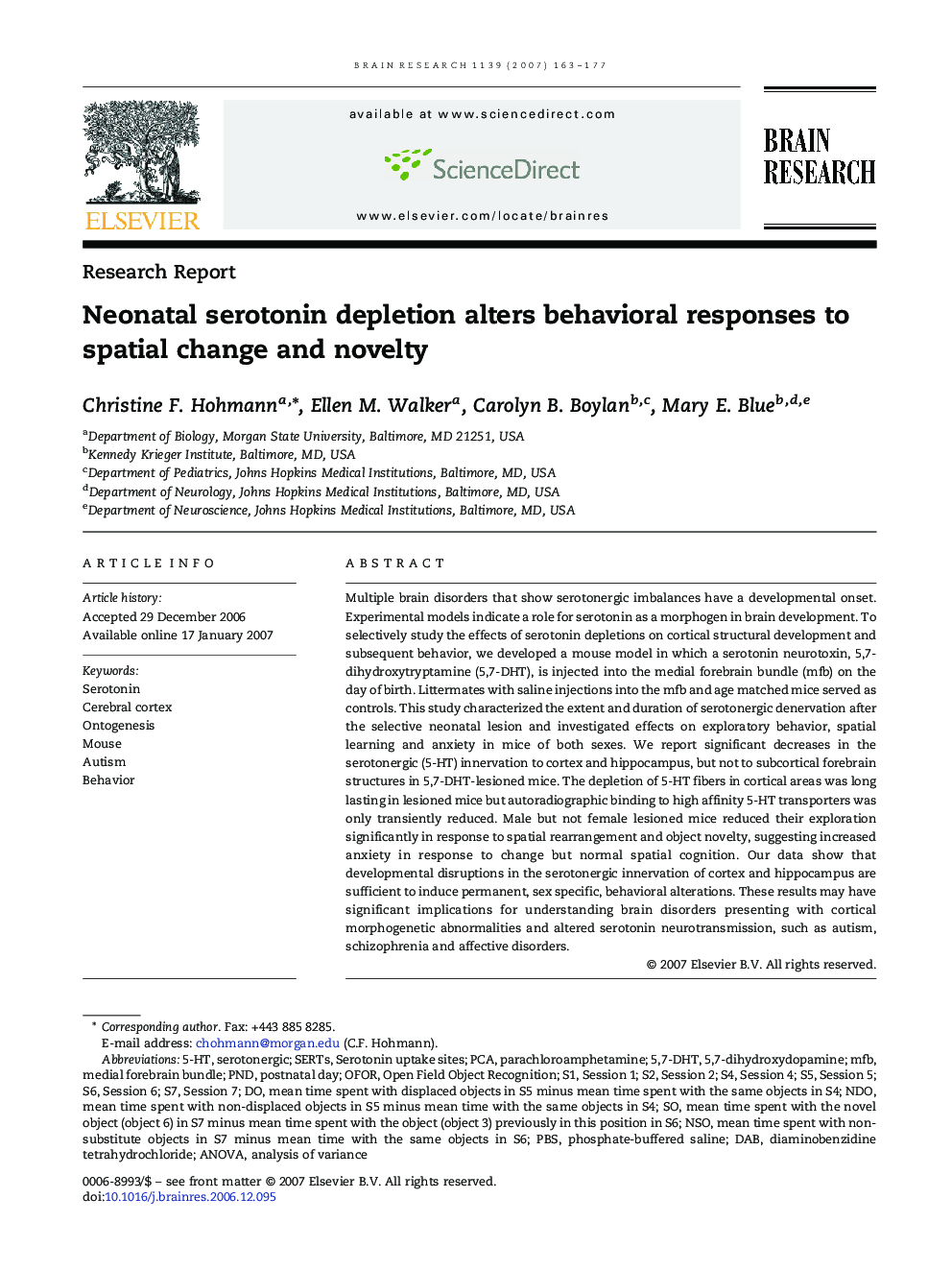| Article ID | Journal | Published Year | Pages | File Type |
|---|---|---|---|---|
| 4331483 | Brain Research | 2007 | 15 Pages |
Multiple brain disorders that show serotonergic imbalances have a developmental onset. Experimental models indicate a role for serotonin as a morphogen in brain development. To selectively study the effects of serotonin depletions on cortical structural development and subsequent behavior, we developed a mouse model in which a serotonin neurotoxin, 5,7-dihydroxytryptamine (5,7-DHT), is injected into the medial forebrain bundle (mfb) on the day of birth. Littermates with saline injections into the mfb and age matched mice served as controls. This study characterized the extent and duration of serotonergic denervation after the selective neonatal lesion and investigated effects on exploratory behavior, spatial learning and anxiety in mice of both sexes. We report significant decreases in the serotonergic (5-HT) innervation to cortex and hippocampus, but not to subcortical forebrain structures in 5,7-DHT-lesioned mice. The depletion of 5-HT fibers in cortical areas was long lasting in lesioned mice but autoradiographic binding to high affinity 5-HT transporters was only transiently reduced. Male but not female lesioned mice reduced their exploration significantly in response to spatial rearrangement and object novelty, suggesting increased anxiety in response to change but normal spatial cognition. Our data show that developmental disruptions in the serotonergic innervation of cortex and hippocampus are sufficient to induce permanent, sex specific, behavioral alterations. These results may have significant implications for understanding brain disorders presenting with cortical morphogenetic abnormalities and altered serotonin neurotransmission, such as autism, schizophrenia and affective disorders.
